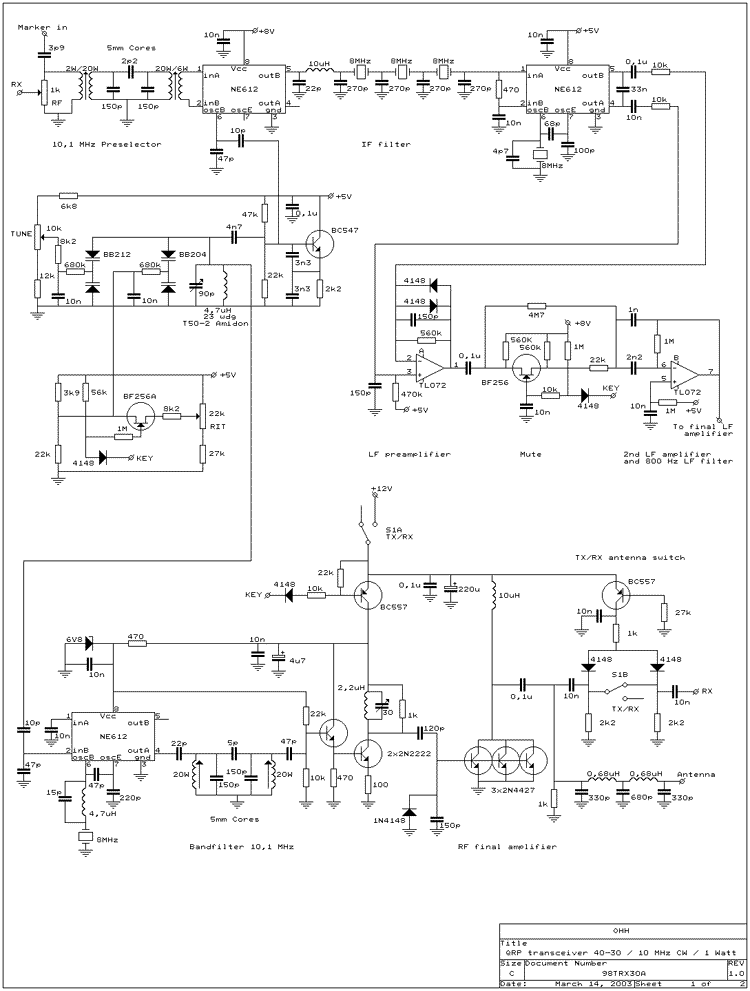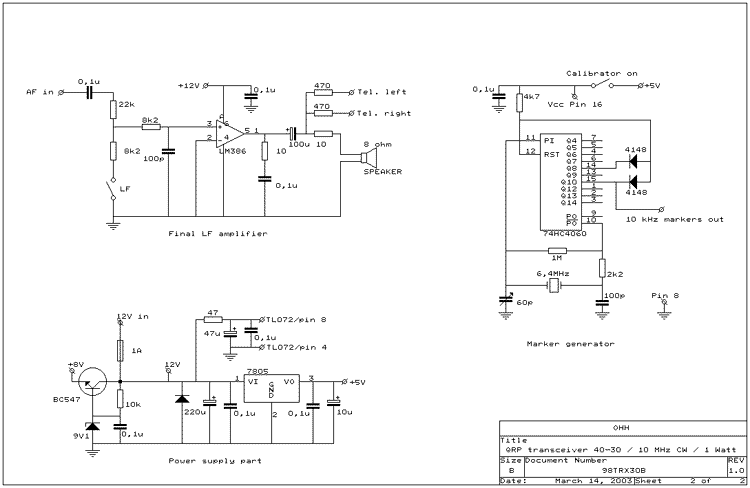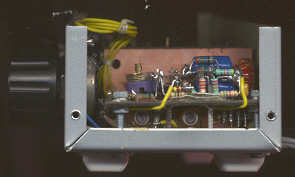
"NiceRig" 40-30
10 MHz CW transceiver 1 watt
QRP,
the 40-30 designed by NE-QRP club

Favourite QRP transceiver
Favourite QRP transceiverThe design
The design is straight forward and I do not think that
you need a further explanation. If you want it, please read the book or
QST.
The receiver is a superhet with an IF of 8 MHz. The VFO range is from
2.1 to 2.15 MHz.
Tuning is done by a single potentiometer, if you use a big
knob, you do not need a 10 turn.
All fixed inductances are standard available
types (like big resistors). The variable ones are wound on 6 mm cores.
It was
not so easy to align the 8 MHz TX crystal oscillator exactly at the center
frequency of the crystal filter. I needed an oscilloscope for that. That is why
there is a 15 pF / 4.7 uH circuit in series with the 8 MHz crystal. You have to
select these values for your crystal.
After alignment of this 8 MHz TX
oscillator, adjust the BFO for an 800 Hz audio tone when transmitting. In my
version, a 4.7 pF capacitor in parallel with the 8 MHz BFO crystal was required
to adjust it to the correct frequency.
The side tone level can be varied by
changing the value of the 4M7 resistor in the mute circuit.
If the RIT is at
zero position, you are exactly on frequency when the audio tone of the other
station is equal to that of the side tone!
Notes
Built via the ugly method (dead bug method). Parts are
soldered at both sides of the double sided unetched print.
The VFO coil is
wound on an iron core T50-2. For better mechanical stability, do not mount the
iron core so close to the metal housing as I did.
I used 3 transistors 2N4427
in parallel in the final stage because I had quite a lot of them. But it is also
possible to use one 2N3553.
DO NOT USE A 78L05 AS STABILIZER BUT A 7805! 780X
TYPES ARE MUCH BETTER THAN 78L0X VERSIONS!
Performance
Sensitivity: 0.25 uV signals are readable
3rd
intercept: 3 dBm
Sideband suppression: 36 dB
Spurious responses: 5.87 MHz:
-58 dB; 8.0 MHz: -59 dB; 12.25 MHz: -92 dB; 14.37 MHz: -84 dB
RX current: 20
mA
Transmit power: 1 W at 9 V; 1.5 W at 12 V; 2 W at 13.8 V
Suppression of
spurious emission: below 30 MHz: 43 dB, above 30 MHz: 55 dB

Circuit diagram, part 1
big diagram

Circuit diagram, part 2
big diagram

Inside the transceiver

Both sides of the unetched PCB are fitted with components